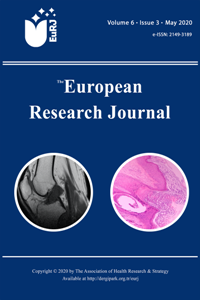Abstract
References
- 1. Hoffmann A, Deuster D, Rosslau K, Knief A, Am Zehnhoff-Dinnesen A, Schmidt CM. Feasibility of 1000 Hz tympanometry in infants: tympanometric trace classification and choice of probe tone in relation to age. Int J Pediatr Otorhinolaryngol 2013;77:1198-203.
- 2. Carmo MP, Costa NT, Momensohn-Santos TM. Tympanometry in infants: a study of the sensitivity and specificity of 226-Hz and 1,000-Hz probe tones. Int Arch Otorhinolaryngol 2013;17:395-402.
- 3. Alaerts J, Luts H, Wouters J. Evaluation of middle ear function in young children: clinical guidelines for the use of 226- and 1,000-Hz tympanometry. Otol Neurotol 2007;28:727-32.
- 4. Lidén G. The scope and application of current audiometric tests. J Laryngol Otol 1969;83:507-20.
- 5. Jerger J. Clinical experience with impedance audiometry. Arch Otolaryngol 1970;92:311-24.
- 6. Park M, Han KH, Jung H, Kim MH, Chang HK, Kim SH, et al. Usefulness of 1000-Hz probe tone in tympanometry according to age in Korean infants. Int J Pediatr Otorhinolaryngol 2015;79:42-6.
- 7. Mazlan R, Kei J, Hickson L, Stapleton C, Grant S, Lim S, et al. High frequency immittance findings: newborn versus six-week-old infants. Int J Audiol 2007;46:711-7.
Abstract
Objectives: Tympanometric evaluation of middle ear with 226 Hertz (Hz) frequency probe has been widely used in patients with suspected middle ear and Eustachian tube disorders. However most of the recent studies were demonstrated that tympanometric examination with 1000 Hz frequency probe was superior to 226 Hz frequency probe examination to detect middle ear disorders affecting middle ear admittance especially for infants. The objective(s) of this study was to compare the reliability and feasibility of 226 Hz and 1000 Hz tympanometric results in normal hearing healthy pediatric group of patients.
Methods: In this study, we evaluated normal healthy pediatric patients with 226 and 1000 Hz frequency probe tympanometry for the aim of comparing efficacy and detecting the rate of false negative tympanometric findings in these subjects. Forty-nine (98 ears) healthy pediatric patients (25 males and 24 females) were enrolled in the study and all of the patients were younger than 18 years of age. Oto-microscopic examination was performed to all of the patients as a gold standard.
Results: The mean age was 9.3 ± 4.46 years old with a range from 3 to 17 years. The mean values of 226 Hz tympanometric measurement of right ears for ear volume, compliance, pressure and gradient were 74 ± 28.10, 59 ± 38.96, -46 ± 92.38 and 36 ±3 3.22, respectively; these values for the left ears were 84 ± 65.94, 51 ± 31.00, -57 ± 102.05 and 30 ± 23.35, respectively. The mean values of 1000 Hz tympanometric measurement of right ears for ear volume, compliance and pressure were 78 ± 23.03, 172 ± 85.04 and -22 ± 110.70, respectively; these values for the left ears were 64 ± 32.05, 147 ± 104.70, and 0 ± 98.20, respectively.
Conclusions: We found that there was no superiority of the usage of 1000 Hz tympanometry to 226 Hz tympanometry in normal hearing healthy pediatric patients who were equal or older than 3 years of age.
References
- 1. Hoffmann A, Deuster D, Rosslau K, Knief A, Am Zehnhoff-Dinnesen A, Schmidt CM. Feasibility of 1000 Hz tympanometry in infants: tympanometric trace classification and choice of probe tone in relation to age. Int J Pediatr Otorhinolaryngol 2013;77:1198-203.
- 2. Carmo MP, Costa NT, Momensohn-Santos TM. Tympanometry in infants: a study of the sensitivity and specificity of 226-Hz and 1,000-Hz probe tones. Int Arch Otorhinolaryngol 2013;17:395-402.
- 3. Alaerts J, Luts H, Wouters J. Evaluation of middle ear function in young children: clinical guidelines for the use of 226- and 1,000-Hz tympanometry. Otol Neurotol 2007;28:727-32.
- 4. Lidén G. The scope and application of current audiometric tests. J Laryngol Otol 1969;83:507-20.
- 5. Jerger J. Clinical experience with impedance audiometry. Arch Otolaryngol 1970;92:311-24.
- 6. Park M, Han KH, Jung H, Kim MH, Chang HK, Kim SH, et al. Usefulness of 1000-Hz probe tone in tympanometry according to age in Korean infants. Int J Pediatr Otorhinolaryngol 2015;79:42-6.
- 7. Mazlan R, Kei J, Hickson L, Stapleton C, Grant S, Lim S, et al. High frequency immittance findings: newborn versus six-week-old infants. Int J Audiol 2007;46:711-7.
Details
| Primary Language | English |
|---|---|
| Subjects | Otorhinolaryngology |
| Journal Section | Original Articles |
| Authors | |
| Publication Date | May 4, 2020 |
| Submission Date | November 27, 2018 |
| Acceptance Date | July 23, 2019 |
| Published in Issue | Year 2020 Volume: 6 Issue: 3 |



